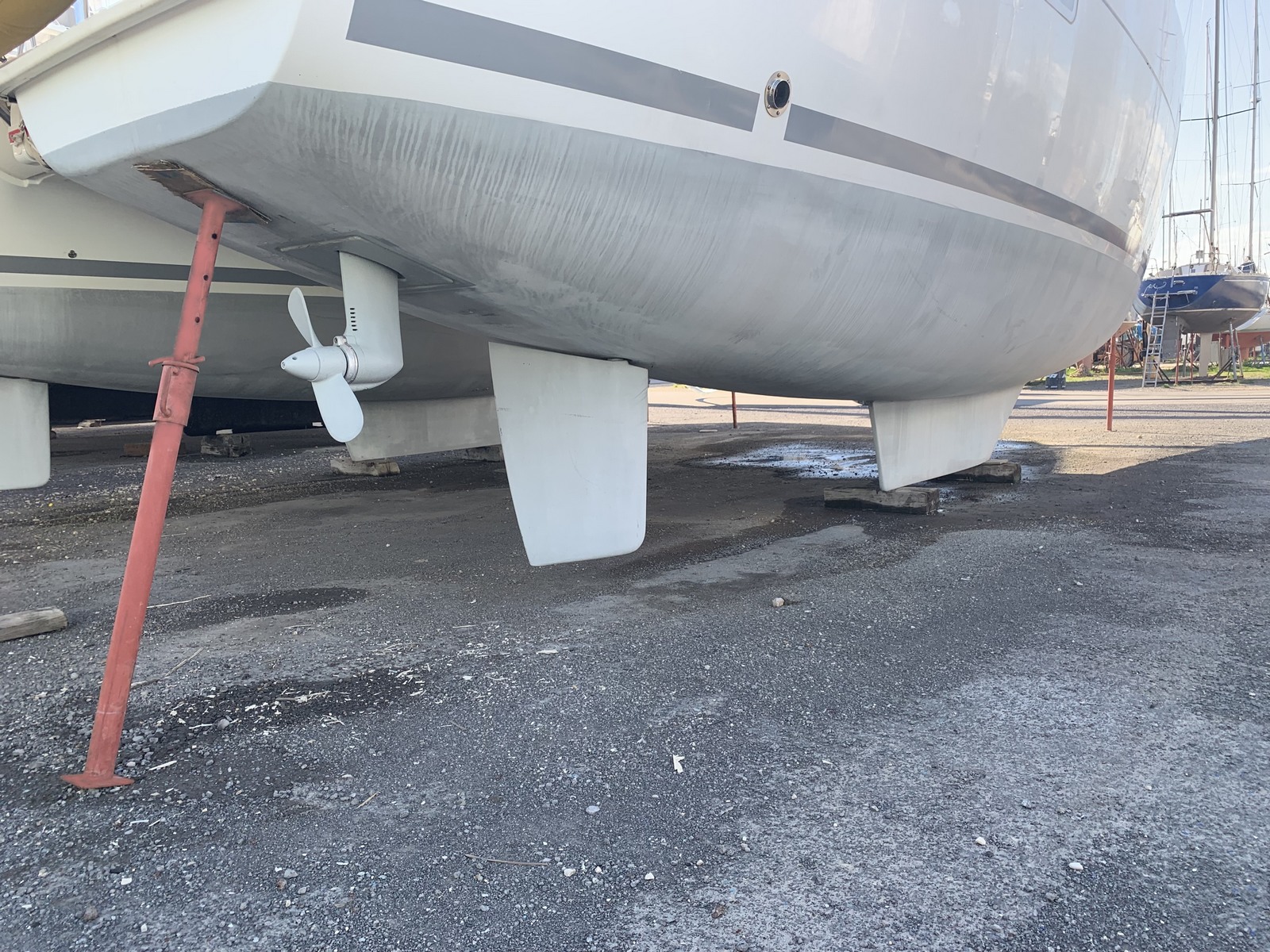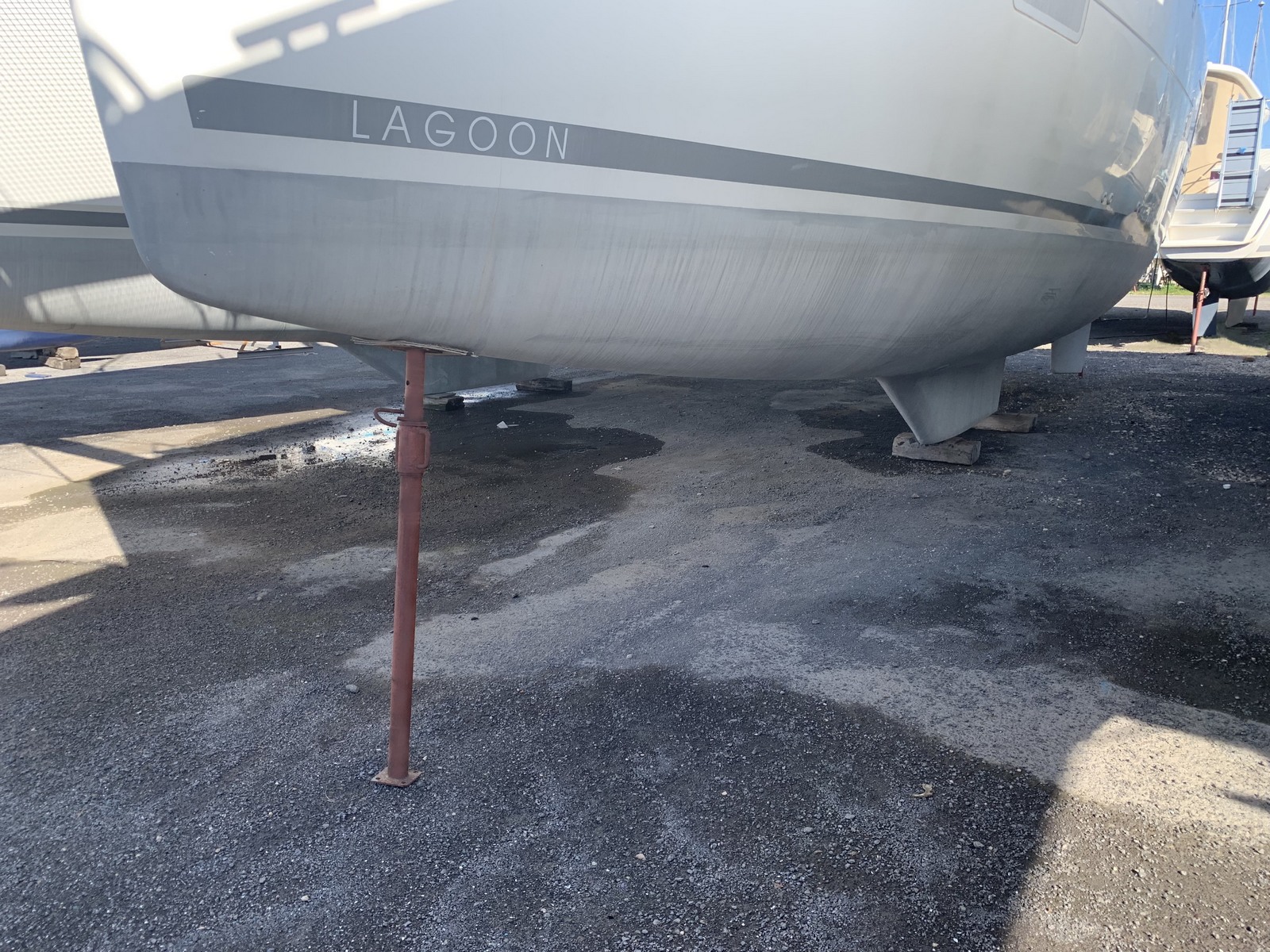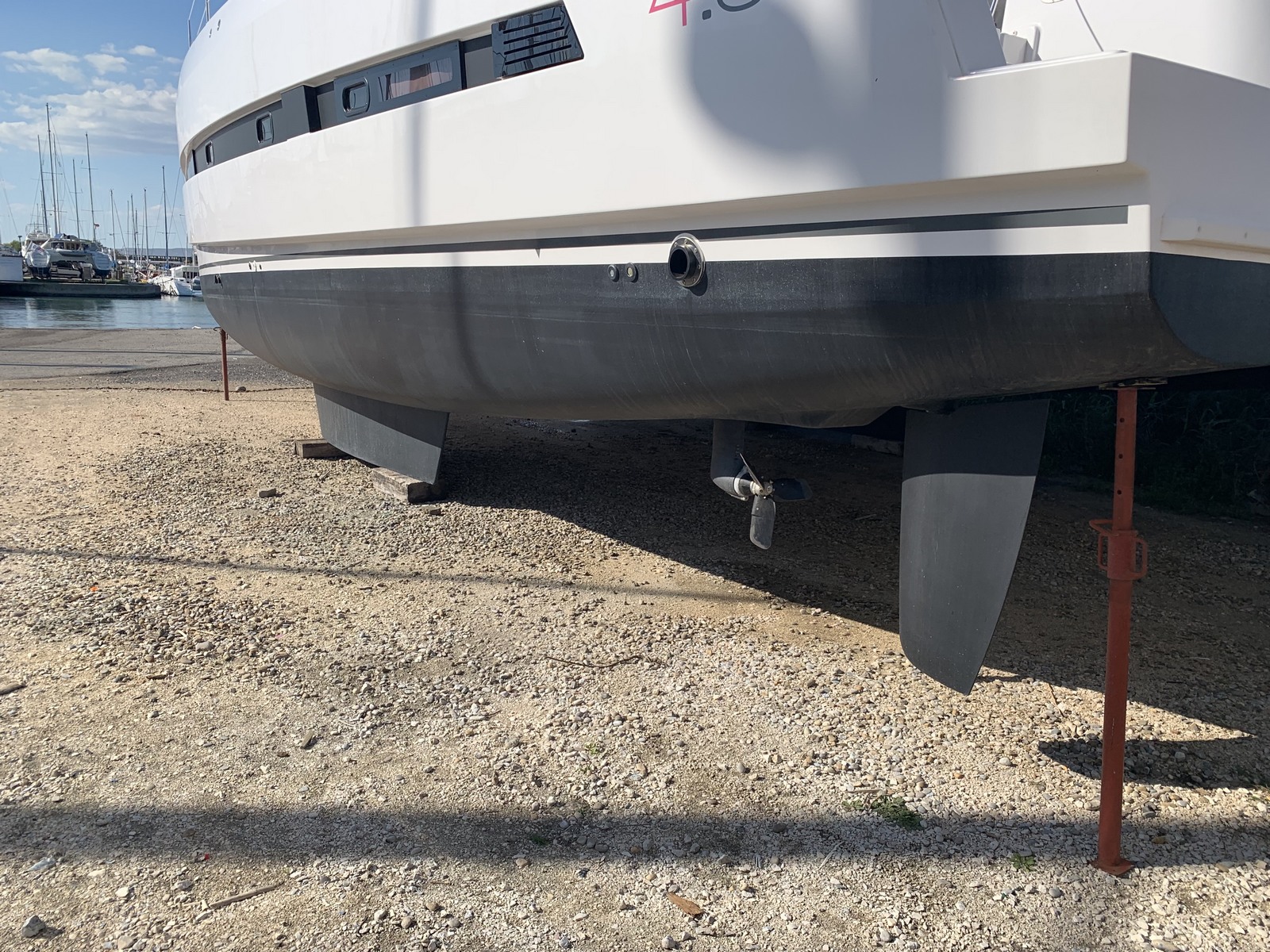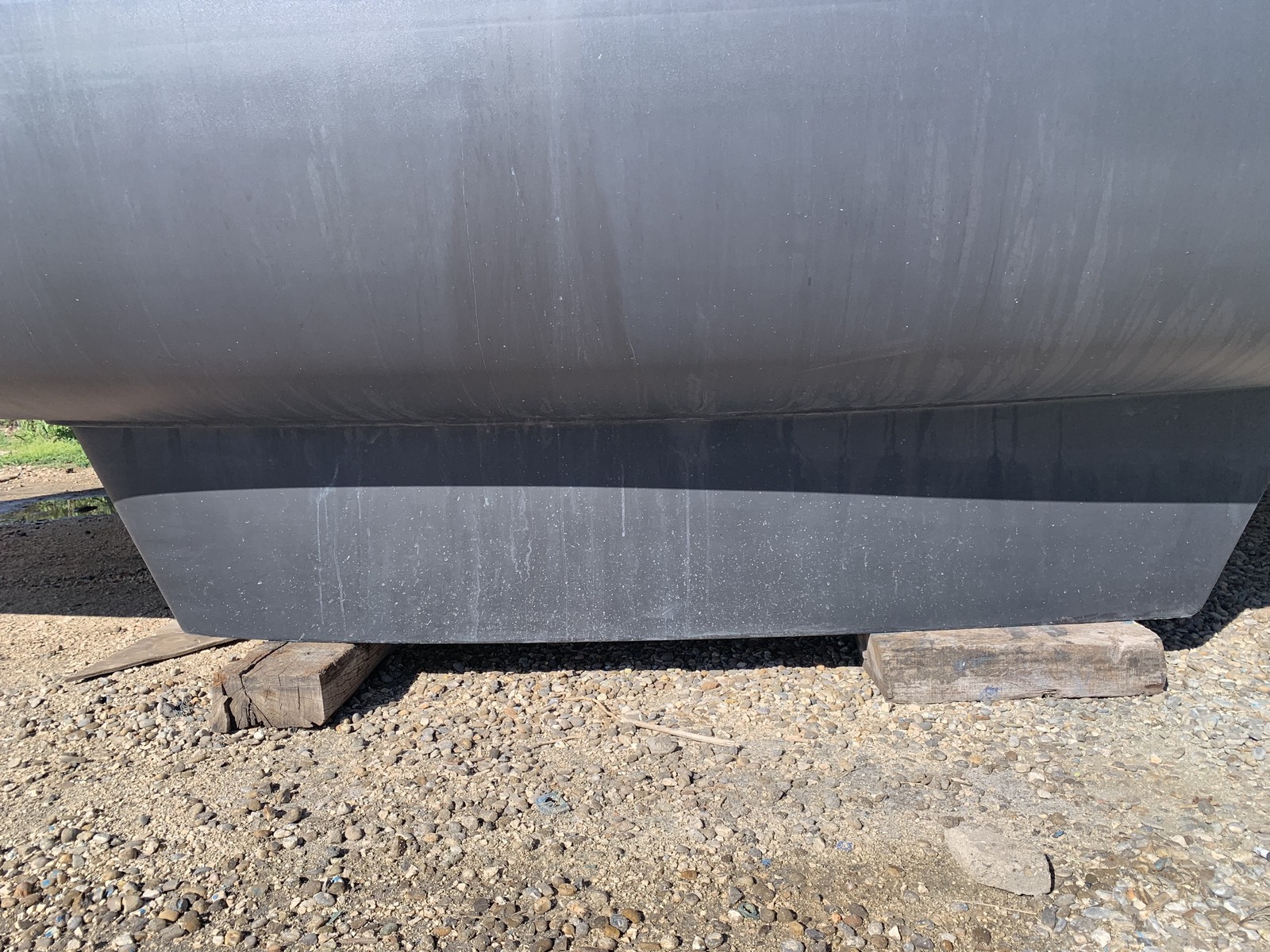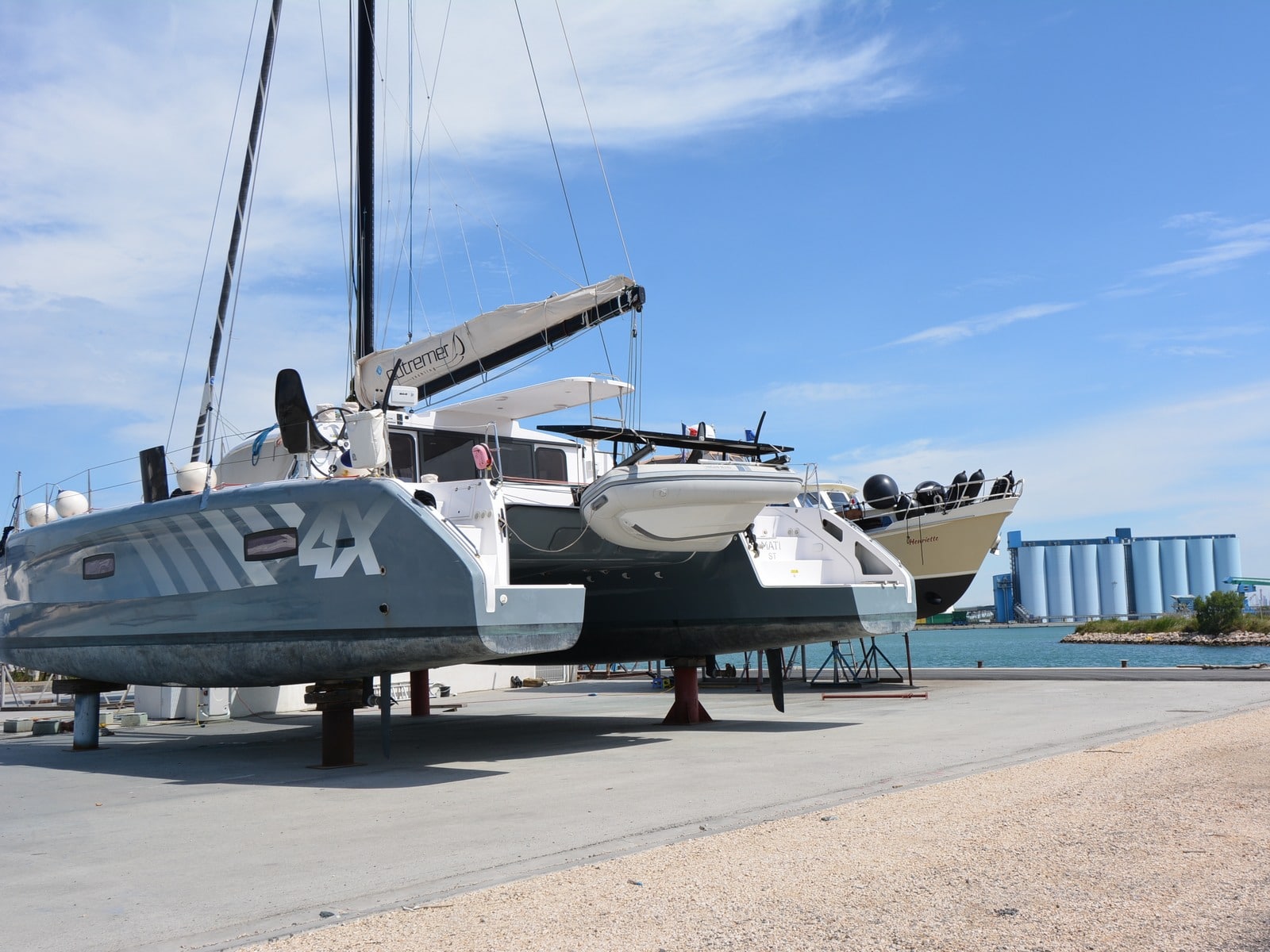The ideal storage and wintering location for your catamaran or trimaran
For over 20 years, Port Navy Service has specialized in the storage and wintering of catamarans and trimarans up to 12 metres wide on land. Offering a dedicated multihull slipway, and two specialized 15 ad 25-tonne hydraulic trailers for lifting and launching, we can ensure quick turnaround, and minimal waiting times.
Should you elect an exterior berthing space, your mast and rigging can remain stepped during lifting and storage. For interior storage, the mast must be unstopped, and stored either alongside your yacht at ground level, or on a dedicated mast storage rack outside.
During your stay at Port Navy Service, numerous amenities are available for your comfort, including:
- Potable water & electricity (64A, 32A and 16A, 220 V and 380 V) from terminais throughout the boatyard
- 3 separate toilet & shower buildings
- Free WiFi throughout the boatyard
- State-of-the-art recycling area for both regular & harmful waste (antifouling, oil, etc.), reflecting our dedication to cleaner seas
- A covered car park for your vehicle
- Self-service ladders
- 380V high-pressure washers
- 24h Smart Laundry/Dryer facilities (10kg capacity, online-monitoring)
Welcome to Cataland
Today, Port Navy Service hosts several hundred catamarans and trimarans across the 24 hectares of our dry marina. The vast size of our site, coupled with the investments we have made in multihull specific infrastructure ensure year-round vacancies and an ideal storage location for these special yachts. We welcome catamarans and trimarans as a core client segment.
Would you like to request a quote for the storage of your boat?
To ensure your Catamaran or Trimaran yacht remains shipshape during storage, here are a few dry berthing tips:
- Clean and stow your fenders and mooring lines
- Rinse your running rigging with fresh water, and store below deck.
- Rinse your deck with fresh water
- Remove your safety and deck equipment (horseshoe buoy, winch handles, bags, outboard annex motor, etc.) and store them below deck
- Winterize the main engine and seal the exhaust with a greasy rag
- Fill up the fuel tanks to avoid condensation
- Empty the water tanks and the water heater to avoid frost damage
- lnside the cabin, remember to leave ail doors open to facilitate air circulation
- Completely empty the refrigerator/freezer(s), disinfect them, and leave the doors open to prevent mould
- Clean toilets and water systems with white vinegar and empty them completely
- If possible, unplug and take your electronics with you to avoid damage in the event of a lightning strike
Multihull-specific:
- Ensure that your trampoline(s) are rinsed with fresh water, removed, and stored securely below decks. These can represent significant windage, and will also become more fragile when left exposed to UV-rays for long periods of time.
- Check that your daggerboards are securely raised and fastened, or remove them entirely and store them below deck.
- Verify that your escape hatches are locked from the inside (model-specific) and that you leave a large, brightly-coloured note and rope attached as a reminder to unlock them before launching.
ln order to ensure the safety of your yacht, your fellow mariners, and the environment, we ask that you strictly adhere to the guidelines below:
- Do not leave your boat connected to the onsite electrical terminais (shore power) after your departure (high risk of fire),
- Disconnect your batteries from the boat’s power grid, unless you have solar panels with an integrated management system,
- Physically block your wind turbine, or dismantle the blades,
- Secure your dinghy (annex) appropriately, ideally below deck. If this is not possible, please ensure that it is lashed down and can resist gale-force winds. Air should also be let out of inflatables, to prevent overinflation when exposed to direct sunlight,
- Remove your sails from their lazy bag(s) and furler(s) and securely store them below deck, or leave them with a sailmaker for maintenance,
- Secure your running rigging and deck hardware so that it does not chafe or rattle,
- Secure your rudder,
- Ensure that any items which represent significant windage (annex, spray hoods, biminis, lazy bags, tarpaulins, etc.) are dismantled and appropriately stored,
- Do not leave equipment, hardware, refuse, or persona! belongings around your boat. Should you require additional storage, container and garage space is available upon request.
- Do not attempt to release or remove standing rigging without prior authorization, and professional assistance. Our mast stepping service and mobile crane is available to help you, and ensure the safety of both your yacht and the surrounding boats.
Please note: The aforementioned guidelines form an integral part of best-practice yacht maintenance, and of our General Terms and Conditions. We are dedicated ta ensuring the safety of both our clients and our staff, and ask for your help in promoting a secure environment.
Failure ta abide by these guidelines may result in injury and/or property damage, and resulting legal action, wherein your personal liability may be invoked.

